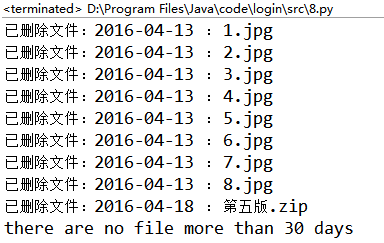python pexpect ssh 远程登录服务器的方法
使用了python中的pexpect模块,在测试代码之前,可输入python进入交互界面,输入help('pexpect'),查询是否本地含有pexpect模块。
如果没有,linux系统输入 easy_install pexpect便可自动安装。
测试代码,连接127.0.0.1
下面是我手动连接127.0.0.1, 发现只有在首次使用ssh连接127.0.0.1时,需要输入yes or no ,而后再次使用ssh ,则不需要再次输入yes
直接输入密码即可。

后续测试代码是二次链接,无需查询是否需要输入yes or no
import pexpect
def send_command(child, cmd):
child.sendline(cmd)
child.expect(PROMT)
print child.before
def connect(user, host, password):
ssh_newkey = 'Ary you sure you want to continue connecting'
connStr = 'ssh ' + user + '@' + host
child = pexpect.spawn(connStr)
'''
ret = child.expect([pexpect.TIMEOUT, ssh_newkey])
if ret == 0:
print "[-] Error 1"
return
elif ret == 1:
child.sendline('yes')
'''
res = child.expect([pexpect.TIMEOUT, '[P|p]assword:'])
if res == 0:
print "[-] Error 2"
return
elif res == 1:
child.sendline(password)
child.expect(PROMT)
return child
def main():
host = '127.0.0.1'#测试主机ip或者主机名
user = 'root'#测试账号
password = 'root'#测试密码
child = connect(user, host, password)
send_command(child, 'w')
if __name__ == '__main__':
main()
可以用pxssh模块更简单来完成ssh的连接
from pexpect import pxssh
def send_command(s, cmd):
s.sendline(cmd)
s.prompt()
print s.before
def connect(host, user, password):
try:
s = pxssh.pxssh()
s.login(host, user, password)
return s
except:
print "error"
exit(0)
def main():
s = connect('127.0.0.1', 'root', '15110506010')
send_command(s, 'whoami')
if __name__ == '__main__':
main()
批量连接肉鸡。
from pexpect import pxssh
botnet = []
class client:
def __init__(self, user, host, password):
self.user=user
self.host=host
self.password=password
self.child=self.connect()
def connect(self):
try:
s = pxssh.pxssh()
s.login(self.host, self.user, self.password)
return s
except Exception, e:
print "Error *" + str(e)
def send_command(self, cmd):
self.child.sendline(cmd)
self.child.prompt()
return self.child.before
def addclient(user, host, password):
c = client(user, host, password)
botnet.append(c)
def botnetcommand(command):
for c in botnet:
output = c.send_command(command)
print "ip: " + str(c.host)
print output
def main():
addclient('root', '127.0.0.1', 'toor')
addclient('root', '****', '*****')
botnetcommand('pwd')
if __name__=='__main__':
main()
以上这篇python pexpect ssh 远程登录服务器的方法就是小编分享给大家的全部内容了,希望能给大家一个参考,也希望大家多多支持【听图阁-专注于Python设计】。


